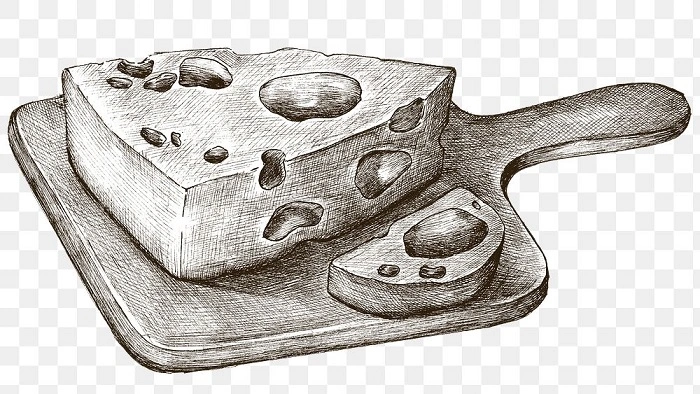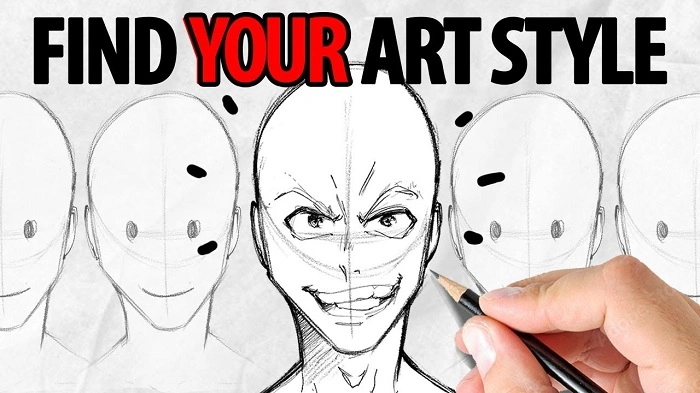Black cheese is a striking and unconventional variation of a traditional dairy product. Whether colored with charcoal, ash, or truffle, it’s visually bold, dramatic, and rich with artistic potential. Drawing black cheese lets you explore texture, contrast, and unexpected tones in a food illustration. This guide walks you through how to draw black cheese in different styles—highlighting its unique look and gourmet context.
Table of Contents
Why Would You Want to Draw “Black Cheese”?
Showcase an Unusual, Visually Stunning Food
Black cheese stands out from the typical color palette of food art. Illustrating it lets you break from norms and work with deep tones, textures, and high contrast.
Explore Texture and Light
Because of its dark color, drawing black cheese is all about how light hits the surface—reflections, subtle cracks, or dusted coatings. It’s a great challenge for light and shadow work.
Create a Sophisticated, Gourmet Aesthetic
Black cheese is often associated with fine dining, artisanal products, and premium branding. Drawing it can support upscale packaging design, editorial visuals, or food-themed art.
Best Tips for Drawing “Black Cheese”

Choose the Cheese Form
Black cheese can be shaped into rounds, wedges, blocks, or slices. Some are encased in wax, while others are naturally dark throughout.
How to Do It:
- Draw a circular wheel or wedge, using firm edges and clean lines.
- For a more rustic cheese, add slight cracks, crumbles, or irregular edges.
- If using wax-rind styles, define a clear outer shell and inner texture.
Focus on the Surface Texture
Some black cheeses are smooth and glossy, while others have a dry or powdery finish due to activated charcoal or ash.
How to Do It:
- Use soft shading with slight gradients to show curved surfaces.
- Add speckles or stippling for a dusty or aged texture.
- Include fine cracks or indentations where the cheese has dried or aged.
Use Contrast to Define Shape
Since the cheese is dark, use light edges and background contrast to help it stand out.
How to Do It:
- Use highlights to show gloss—apply thin white or light grey lines on curves or edges.
- Add a light or colored surface behind the cheese (like a wooden board or white plate).
- Emphasize outline clarity if working in a flat illustration style.
Include Serving Elements for Context
To help identify it as cheese (and not, say, coal), add classic cheese-pairing visuals.
How to Do It:
- Include crackers, grapes, olives, or a cheese knife.
- Draw it on a slate or wooden board to suggest a tasting setting.
- Label it or include a small placard to clearly communicate it’s “Black Cheese.”
Show a Cross-Section
If the cheese is only black on the outside (e.g., coated in ash), show a slice or wedge with contrast between interior and exterior.
How to Do It:
- Draw a cut wedge showing a white, yellow, or marbled interior.
- Use shading to differentiate the layers and rind.
- Emphasize the dark outer edge with a slight shadow or cracked rind detail.
Add Style-Appropriate Lighting
Lighting plays a huge role with black materials—so define where the light is coming from and reflect it carefully.
How to Do It:
- Use soft, directional lighting to show subtle curvature and depth.
- Highlight edges or flat surfaces with pale grey strokes or dots.
- Avoid flat black fill—use layered tones for dimension.
Choose a Style That Fits the Mood
Realistic Style: Dramatic and Detailed
- Focus on light play, fine texture, and subtle color shifts.
- Best for packaging mockups, food blogs, or premium cheese illustrations.
Cartoon Style: Bold and Playful
- Use thick outlines, exaggerated forms, and expressive add-ons.
- Add smiley faces or stylized icons to make the cheese fun and approachable.
- Great for social media, stickers, or pet/kid-themed content.
Minimalist Style: Modern and Conceptual
- Use simple geometry and high contrast.
- Focus on negative space and a limited palette—black, grey, white, and maybe one highlight color.
- Ideal for branding, logos, or contemporary recipe visuals.
How to Choose the Best Style for Your Drawing


For High-End Visuals or Food Branding
A realistic or minimalist style captures the premium, unusual nature of black cheese best.
For Fun Content or Educational Pieces
A cartoon style adds personality and simplifies the concept for broader audiences.
For Artistic Posters or Product Design
Go abstract or modern minimalist for maximum visual impact with minimal detail.
How to Store Your Drawing
Keep Physical Drawings Safe
Use acid-free sleeves or mount it in a frame if you’re presenting it for display.
Back Up Digital Work
Export layered files (PSD, AI) and flat versions (PNG, JPG) for different uses—especially useful if using it for branding.
Upload your drawing to platforms like Behance, Dribbble, or Pinterest for visibility in the food art niche.
Frequently Asked Questions (FAQs)
What makes cheese “black”?
It’s often colored with activated charcoal, ash, or infused with black truffle or food-grade coloring. Some are naturally dark due to aging or rind treatments.
How do I avoid the cheese looking like a rock?
Context is key—add labels, food pairings, or a slice to show it’s edible cheese, not stone.
How do I draw black without losing detail?
Use multiple shades of grey and careful highlights. Avoid filling areas with flat black—layer depth with subtle texture.
Should I add background or leave it clean?
Depends on the style. Minimalist looks benefit from a clean background, while realistic or scene-based drawings look better with context like a cheese board or tasting setup.
Can I stylize black cheese in bright colors?
Yes—especially in cartoon style. Try pairing the black cheese with bright, saturated side elements to make it pop visually.

